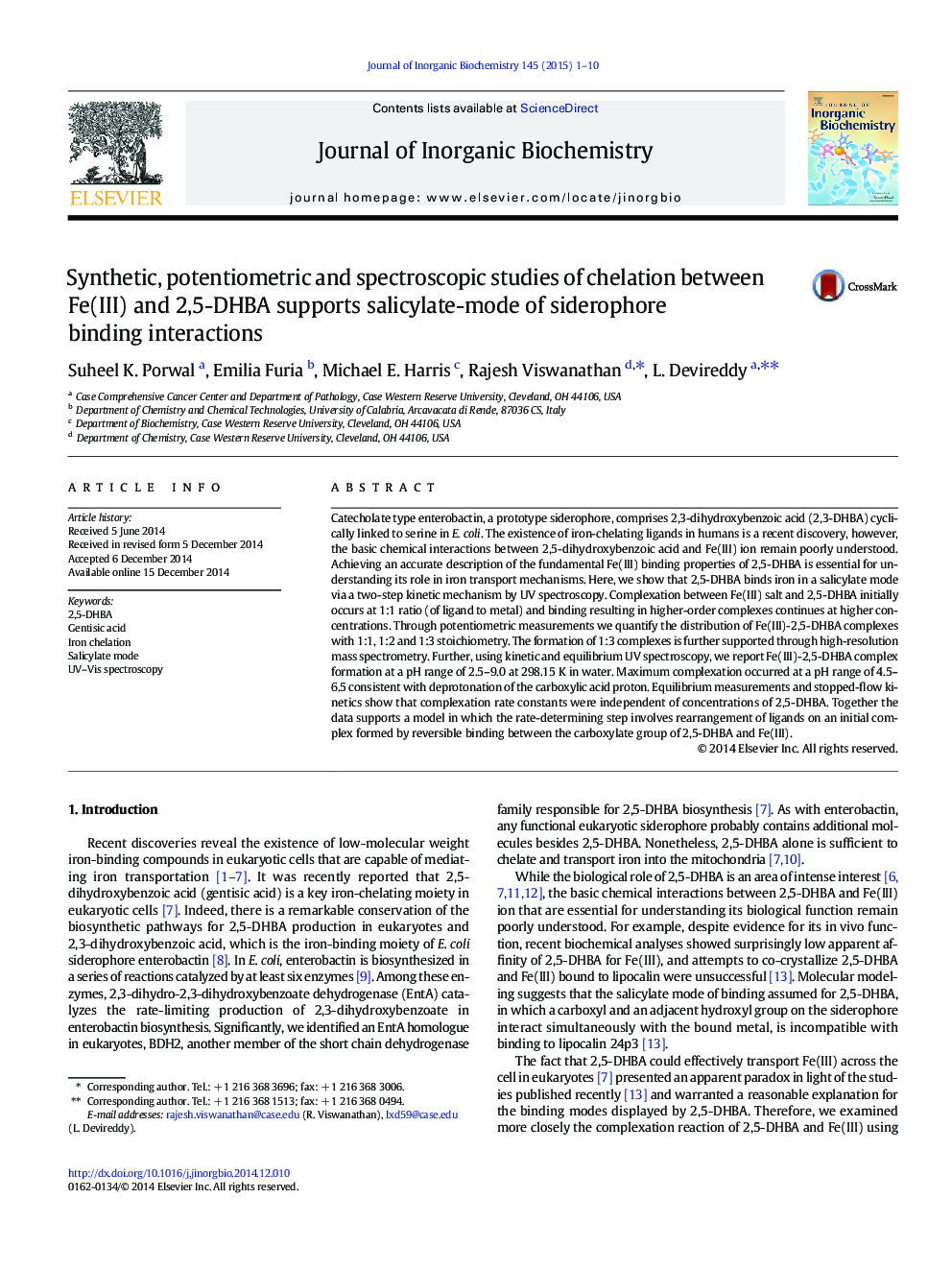| کد مقاله | کد نشریه | سال انتشار | مقاله انگلیسی | نسخه تمام متن |
|---|---|---|---|---|
| 1317156 | 1499442 | 2015 | 10 صفحه PDF | دانلود رایگان |

• 2,5-DHBA binds iron in salicylate mode in a two-step kinetic mechanism.
• 2,5-DHBA binds iron in 1:1, 2:1, and 3:1 stoichiometry.
• 2,5-DHBA binds iron at pH ranging from 2.5 to 9.0.
Catecholate type enterobactin, a prototype siderophore, comprises 2,3-dihydroxybenzoic acid (2,3-DHBA) cyclically linked to serine in E. coli. The existence of iron-chelating ligands in humans is a recent discovery, however, the basic chemical interactions between 2,5-dihydroxybenzoic acid and Fe(III) ion remain poorly understood. Achieving an accurate description of the fundamental Fe(III) binding properties of 2,5-DHBA is essential for understanding its role in iron transport mechanisms. Here, we show that 2,5-DHBA binds iron in a salicylate mode via a two-step kinetic mechanism by UV spectroscopy. Complexation between Fe(III) salt and 2,5-DHBA initially occurs at 1:1 ratio (of ligand to metal) and binding resulting in higher-order complexes continues at higher concentrations. Through potentiometric measurements we quantify the distribution of Fe(III)-2,5-DHBA complexes with 1:1, 1:2 and 1:3 stoichiometry. The formation of 1:3 complexes is further supported through high-resolution mass spectrometry. Further, using kinetic and equilibrium UV spectroscopy, we report Fe(III)-2,5-DHBA complex formation at a pH range of 2.5–9.0 at 298.15 K in water. Maximum complexation occurred at a pH range of 4.5–6.5 consistent with deprotonation of the carboxylic acid proton. Equilibrium measurements and stopped-flow kinetics show that complexation rate constants were independent of concentrations of 2,5-DHBA. Together the data supports a model in which the rate-determining step involves rearrangement of ligands on an initial complex formed by reversible binding between the carboxylate group of 2,5-DHBA and Fe(III).
Eukaryotic siderophore, 2,5-DHBA binds iron in a salicylate mode via a two-step kinetic mechanism. Stoichiometry of Fe(III) to 2,5-DHBA is 1:1, 1:2 and 1:3 as judged by potentiometric measurements and high-resolution mass spectrometry. Kinetic and equilibrium UV spectroscopy revealed that Fe(III)-2,5-DHBA complex formation occurs at a pH range of 2.5–9.0 in water.Figure optionsDownload as PowerPoint slide
Journal: Journal of Inorganic Biochemistry - Volume 145, April 2015, Pages 1–10